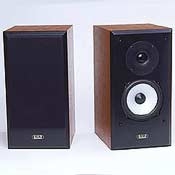Geometry Dash fans, brace yourselves for an exciting new chapter in the series - geometry dash subzero has arrived!
Battle of The Bookshelfs Page 2
Critical Listening For each speaker, Al and I gave separate scores on a five-point scale for tonal balance, dynamics, bass, and imag ing. (Al's scores are given in blue and mine in red.) These four parameters are often discussed as if they're independent of each other, but they're not. Even a small difference in bass output can have an enormous influence on the perceived tonal balance and dynamics. Imaging is likewise greatly influenced by the tonal balance above the bass range. These interactions help make all the scores go up and down together. A good speaker will tend to perform well in all respects.
Al and I wrote up our notes separately right after our independent listening comparisons, while the sounds were fresh in our minds and without discussing our results with each other. These uninhibited comments were based solely on what we heard and on our musical tastes and review ing personalities - which, as you'll see, are quite different.
The first comparison pitted the Boston Acoustics CR75 ($300), Jamo E 610 ($350), and KEF Cresta 2 ($299) against each other, while the second was between the Acoustic Energy Aegis One ($300), Monitor Audio Bronze 1 ($299), and NHT SB1 ($300). Since we listened to only three speaker pairs at a time, the comments rarely refer to models not in that particular group of three. Remember that our notes originally referred only to the colors of the selector buttons (green or blue, say) and that the actual brand and model names were inserted later during editing.
Also keep in mind that the rankings pertain only to these six speakers judged against each other. If any of them had been grouped with five other speakers, its ranking may have turned out differently. 
| Acoustic Energy Aegis 1 | A.G. | D.R. |
| Tonal Balance | 3 | 4 |
| Dynamics | 3 | 4 |
| Bass | 3 | 4 |
| Imaging | 4 | 3 |
Al Griffin: Though hardly shy on bass, the Acoustic Energy Aegis One delivered considerably "looser" low notes than the Monitor Audio Bronze 1. The electric bass guitar on the Charlie Hunter Trio's reading of "Come As You Are" sounded tubby and ill-defined, while the bowed strings of the acoustic bass had a downright mushy sound that was out of step with the rest of the speaker's tonal range. The speaker's fairly muted highs, which were evident on every track I listened to, created an overall dark presentation that robbed the cymbals in Charles Lloyd's "The Water is Wide" of their sizzle and the drums in Beth Orton's "She Cries Your Name" of their snap.
On the plus side, the Aegis One displayed good imaging. The huge soundstage in both the Charlie Hunter and Charles Lloyd cuts came across about as well as it did with any speaker in this group, and the wide lateral spread of Massive Attack's "Angel" was also delivered intact.
Dynamics were just okay. The speaker held together well through the loud cres cendos at the culmination of the Massive Attack cut, but it stumbled on the subtle peaks and valleys in Goldfrapp's "Paper Bag," which were somewhat murky and indistinct. The Aegis One probably wouldn't sound bad on its own, but in A/B comparison with the other speakers, its laid-back highs and loose bass were hard to overlook.
David Ranada: The slightly muffled quality in the strings I sensed near the beginning of Mozart's opera The Abduction from the Seraglio persisted through all the other orchestral selections I tried, as well as with the Bach organ music and some hardpsichord music. This slight congestion hampered spatial reproduction and clarity in complex textures. Both male and female vocals came out very well, however. Bass performance was excellent, especially when the speakers were being played loud. 
| Boston Acoustics CR75 | A.G. | D.R. |
| Tonal Balance | 3 | 4 |
| Dynamics | 4 | 4 |
| Bass | 4 | 3 |
| Imaging | 3 | 4 |
AG: The CR75 immediately registered itself as a good rock speaker in my book, providing a decent wallop of bass, clear mid frequencies, and a slightly forward-sounding high end that helped to convey the snap of the drum kit and plucked acous tic-guitar strings on the Beth Orton track. The vocals sounded slightly sibilant on both the Orton and the Goldfrapp, however. And when pushed to loud volumes, the sax on the Charlie Hunter became coarse. Also, compared with the Jamo, the Bos ton's lower midrange sounded sucked-out and anemic on this track - a quality that was most evident during the drum-kit build up in the second half.
Imaging was good, although it lagged behind some of the other speakers here. There was a decent sense of width on the Massive Attack cut, but a somewhat shallower sense of depth. The dynamic performance was also good, conveying the crescendos in this song with only a minimum of audible effort. The speaker also did well with the Beth Orton track. All things considered, I'm sure that the Bos ton's clarity, combined with its better-than-average bass, will please a good number of listeners. In the end, however, I found its sonic signature lean and somewhat dry.
- Log in or register to post comments















































